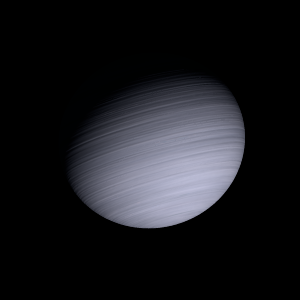|
|
Space Astro
|
Info for exoplanet "Yueken'q"
| Scientific (actual) data |
|---|
| Name | TOI-1855 Ab |
| Planet status | Confirmed |
| Planet mass | 1.133 |
| Radius | 1.65 |
| Orbital period | 1.36415 |
| Semi major axis | 0.02398 |
| Orbit eccentricity | 0.033 |
| Inclination | 78.1 |
| Discovered | 2024 |
| Updated | 2025-03-21 |
| Omega | -100 |
| Tzero tr | 2458930 |
| Impact parameter | 1.024 |
| K | 204 |
| Temperature (kelvin) | 1700 |
| Publication | Published in a refereed paper |
| Detection type | Primary Transit, Radial Velocity |
| Mass measurement type | Radial Velocity |
| Radius measurement type | Primary Transit |
| Star name | TOI-1855 A |
| Right ascension | 205.35° |
| Declination | 17.69° |
| Star distance | 177 |
| Star mass | 0.987 |
| Wikipedia article | TOI-1855 Ab |
Back
| |
| Fictional info (?) |
|---|
| Suggested name | Yueken'q |
| Planet type | Cold gas giant |
| Its orbital period around TOI-1855 A of 1.4 earth days is the shortest of all the planets in its solar system.
The planet telescopically displays the complete range of phases, similar to Venus and the Moon, as it moves in its inner orbit relative to TOI-1855 A, which reoccurs over the so-called synodic period approximately every 99 days.
The smooth Borealis basin in the northern hemisphere covers 15 percent of the planet and may be a giant impact feature.
The volume of water ice in the south polar ice cap, if melted, would be sufficient to cover the entire planetary surface to a depth of 15 meters. |
| Atmosphere | Hydrogen chloride | 51% |
| Krypton | 27% |
| Ethane | 21% |
| Ammonia | 0.55% |
| Neon | 0.28% |
| Atmospheric pressure | 0.001 bar |
 |
| No known satellites |
| Google search for Yueken'q |
|
Website by Joachim Michaelis
|
|
|
|